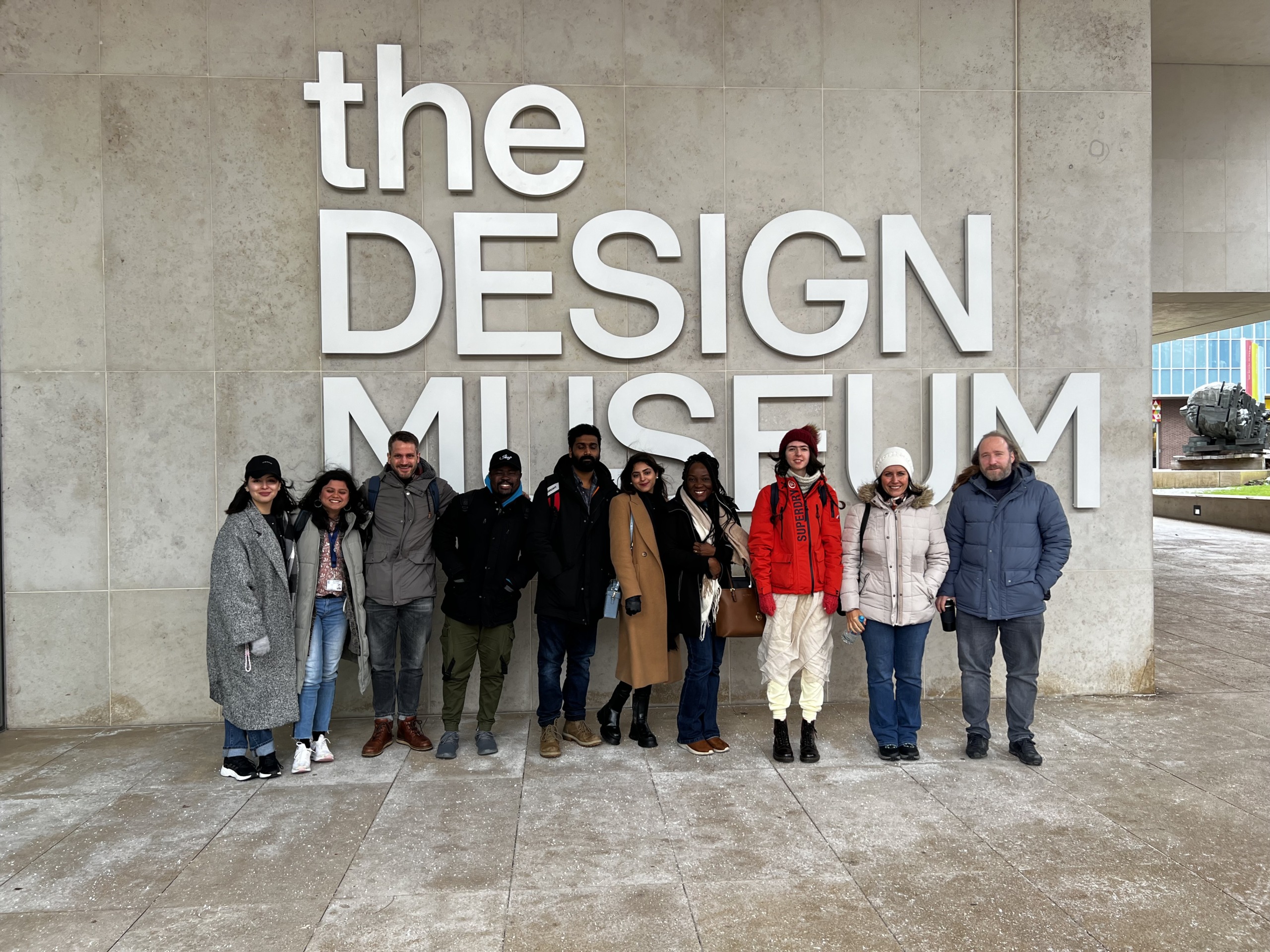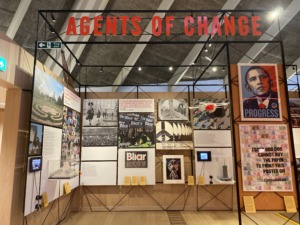Design as a Tool for Change
24/05/2023

Design as a Tool for Change: Exploring Circular Economy and Sustainability through a visit to the Design Museum
Design has become increasingly important in creating sustainable solutions for a better future. At the forefront of this movement is the concept of circular economy, where the focus is on designing products and systems with the aim of eliminating waste and reducing negative environmental impacts.
We had the opportunity as students from MDes Design Thinking from Cranfield University to visit the Design Museum in London, where I gained a deeper understanding of the role of design in promoting circular economy, whole system design, and sustainability.
Upon entering the museum, I was immediately struck by the various exhibitions that showcased the power of design in transforming our world. One such exhibition was the “Designer Maker User” exhibit, which highlighted the interplay between these three roles in creating products that are both functional and aesthetically pleasing. The exhibit featured a range of products, from everyday household items to high-tech gadgets, all designed with the goal of reducing waste and promoting sustainability.
As I moved through the museum, I also encountered several displays that showcased the power of whole system design. The “Internet of Things” exhibit, for instance, explored the role of system designs in connecting physical objects over the internet. Connected devices can amass vast amounts of data that can help us better understand how we use objects and the changes in how we live and work. This exhibit made it clear that whole system design can play a crucial role in addressing the perceived need to redesign development; not simply to harm the environment less, but rather to be truly restorative of nature and ecosystems, and society and communities through connectivity.
Also, the museum’s “Agents of Change” exhibit highlighted the role of design in shaping political campaigns and activism, highlighting the importance of considering the entire system in which a product or service exists. This exhibit made it clear that design can play a crucial role in promoting social and environmental justice, especially when it comes to advocating for systemic change.

Finally, a quick check-in at the “Kyoto Garden” near the museum was refreshing for students to learn about its history. The Koyoto Garden was constructed as part of the Japan Festival 1991 on the centenary of the Japan Society in British. It was built by the Kyoto Chamber of Commerce and Industry with the help of many Gardening Companies in Kyoto and was presented to the Royal Borough of Kensington and Chelsea as a gift to commemorate the long-lasting friendship between Great British and Japan.
Overall, my visit to the Design Museum was an inspiring and eye-opening experience that underscored the power of design in promoting a circular economy, whole system design, and sustainability. As we continue to grapple with the challenges of climate change and environmental degradation, design will play an increasingly important role in shaping our world for the better.
Choose Cranfield University,
Choose Design Thinking.
Categories & Tags:
Leave a comment on this post:
You might also like…
Keren Tuv: My Cranfield experience studying Renewable Energy
Hello, my name is Keren, I am from London, UK, and I am studying Renewable Energy MSc. My journey to discovering Cranfield University began when I first decided to return to academia to pursue ...
3D Metal Manufacturing in space: A look into the future
David Rico Sierra, Research Fellow in Additive Manufacturing, was recently involved in an exciting project to manufacture parts using 3D printers in space. Here he reflects on his time working with Airbus in Toulouse… ...
A Legacy of Courage: From India to Britain, Three Generations Find Their Home
My story begins with my grandfather, who plucked up the courage to travel aboard at the age of 22 and start a new life in the UK. I don’t think he would have thought that ...
Cranfield to JLR: mastering mechatronics for a dream career
My name is Jerin Tom, and in 2023 I graduated from Cranfield with an MSc in Automotive Mechatronics. Originally from India, I've always been fascinated by the world of automobiles. Why Cranfield and the ...
Bringing the vision of advanced air mobility closer to reality
Experts at Cranfield University led by Professor Antonios Tsourdos, Head of the Autonomous and Cyber-Physical Systems Centre, are part of the Air Mobility Ecosystem Consortium (AMEC), which aims to demonstrate the commercial and operational ...
Using grey literature in your research: A short guide
As you research and write your thesis, you might come across, or be looking for, ‘grey literature’. This is quite simply material that is either unpublished, or published but not in a commercial form. Types ...






